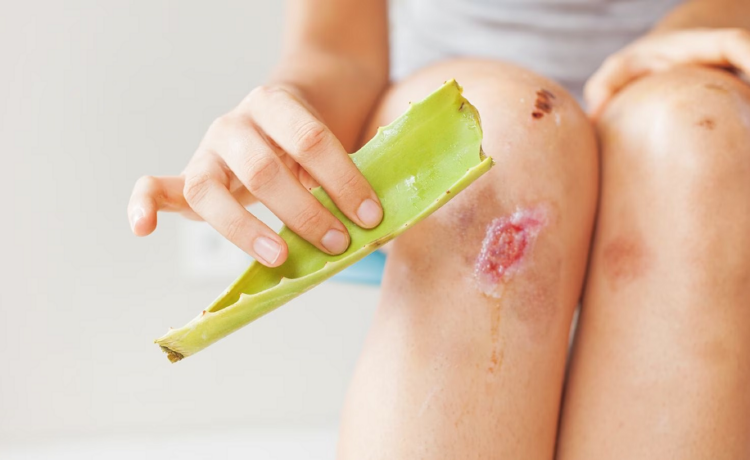Wounds, whether minor cuts, surgical incisions, or injuries from chronic conditions, are a common part of life. While the healing process can vary, you can take steps to speed up recovery and get back to feeling your best. By following expert tips and integrating advanced techniques, you can support your body’s natural ability to heal. Let’s explore some of the best strategies to achieve faster wound healing.
Experience the Advantages of Red Light Therapy
An innovative approach to wound healing is utilizing the red light therapy benefits, a non-invasive treatment that enhances cellular regeneration through low-level light therapy (LLLT). This advanced method delivers specific light wavelengths to the skin, boosting blood circulation and stimulating collagen and elastin production. These proteins are essential for repairing damaged tissues. Clinical studies highlight the effectiveness of red light therapy in reducing inflammation, promoting faster healing, and easing discomfort. It’s an ideal addition to your wound care regimen, no matter the severity of the injury.
Prioritize Cleanliness
Proper cleaning is the foundation of wound care. Wash the affected area gently with mild soap and water or a saline solution to remove debris and bacteria. Avoid using harsh chemicals unless advised by your doctor, as they can irritate the wound. After cleaning, pat the wound dry with a clean cloth and apply a protective dressing to shield it from further harm.
Fuel Your Body with Nutritious Foods
Nutrition plays a vital role in how efficiently your body heals. A diet rich in Vitamin C, Vitamin A, zinc, and protein can significantly improve tissue repair. Foods like leafy greens, citrus fruits, nuts, fish, and lean meats provide the nutrients your body needs to regenerate skin cells and fight infections. Staying hydrated is equally essential, as water aids in transporting oxygen and nutrients to the healing site.
Control Swelling Naturally
Inflammation is a normal part of recovery, but too much swelling can hinder the process. To minimize swelling, elevate the injured area when possible and use a cold compress during the first two days after the injury. Incorporating anti-inflammatory foods such as turmeric, ginger, and omega-3 fatty acids into your meals can further help manage inflammation from the inside out.
Stay Active but Rest Strategically
Light physical activity can enhance blood flow and deliver oxygen to the affected tissues, promoting faster recovery. However, overdoing it or stressing the wound can cause delays. Engage in light activities like walking or yoga, but avoid straining the injured area. Follow your healthcare provider’s recommendations for safe levels of activity to support healing.
Eliminate Harmful Habits
Alcohol and tobacco use can seriously slow the healing process. Smoking reduces oxygen supply to tissues, while alcohol weakens the immune system, making it harder to fight infections. Avoiding these habits during recovery can help your wound heal more quickly and effectively.
Explore Modern Wound Care Products
Advanced wound care solutions, such as hydrogel dressings, antimicrobial bandages, and silicone sheets, can speed up the healing process. These products create an optimal environment for recovery while protecting the wound from external harm. For more complex injuries, consulting a healthcare professional may lead to specialized treatments like tissue grafts or targeted ointments.
Watch for Infection
It’s crucial to monitor your wound for any signs of infection, as these can slow recovery. Symptoms such as redness, increased swelling, warmth, unusual discharge, or an unpleasant odor may indicate a problem. If you notice a fever or persistent pain, seek medical attention promptly to address the issue before it worsens.
Rest and Manage Stress
Quality sleep is essential for wound healing, as your body focuses on repairing itself during rest. Try to get 7 to 8 hours of sleep per night without interruptions. Additionally, stress can slow recovery by increasing cortisol levels, which suppress the immune system. Incorporate relaxation techniques like deep breathing, meditation, or gentle exercise to help lower stress and support your healing journey.
Try Other Phototherapy Solutions
In addition to red light therapy, other phototherapy options like near-infrared light are gaining recognition for their ability to speed up tissue repair and reduce pain. These therapies complement traditional wound care and can be seamlessly integrated into your routine for enhanced recovery outcomes.
Conclusion
Healing wounds doesn’t have to be a slow process. By incorporating modern innovations like advantages of red light therapy alongside tried-and-true practices such as cleanliness, proper nutrition, and adequate rest, you can significantly reduce recovery time. With the right combination of care and attention, your body can heal efficiently, allowing you to regain your health and confidence sooner than expected.

